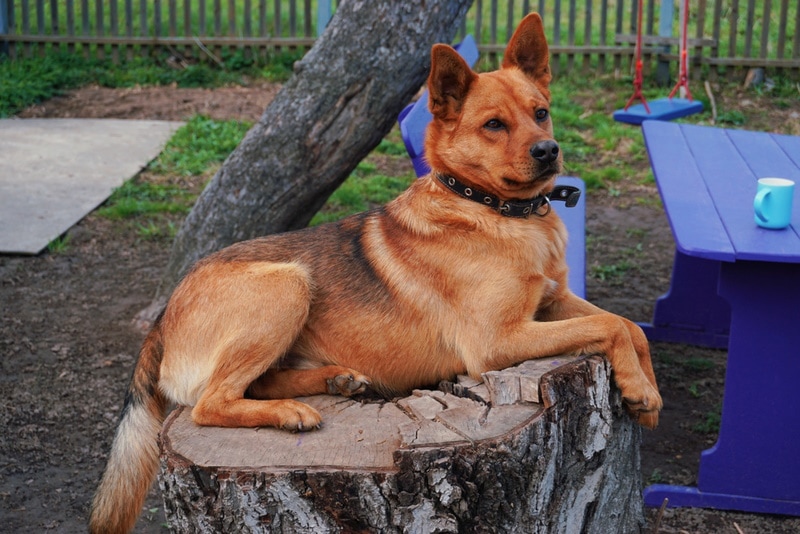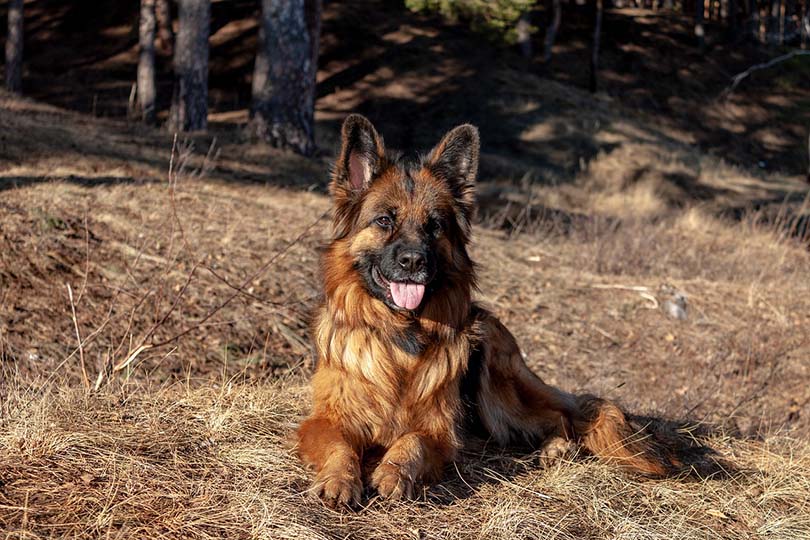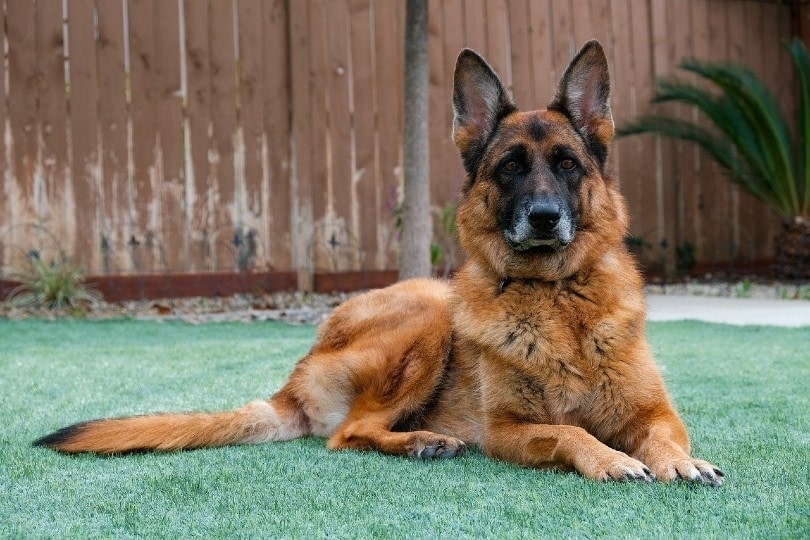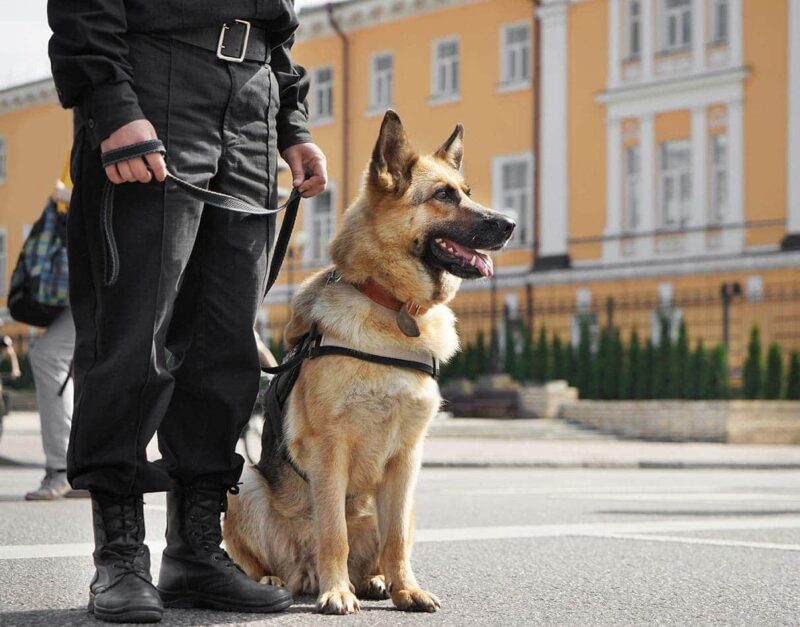Red German Shepherd: Facts, Origin & History (with Pictures)
Updated on

One of the most beloved dog breeds, the German Shepherd is an all-purpose dog that’s served as a guard dog, farm dog, family companion, or service dog. Most people are familiar with the regal black and tan color of the German Shepherd, but the lesser-known Red German Shepherd replaces the tan with a deep auburn color that’s particularly striking.
Red German Shepherds are typically called Black and Red German Shepherds. Though they have a unique coat compared to the classic Shepherd look, they share the same temperament and athleticism as the original. Learn more about Black and Red German Shepherds.
| Height: | 22–26 inches |
| Weight: | 50–90 pounds |
| Lifespan: | 7–10 years |
| Colors: | Red |
| Suitable for: | Active families, single owners, canine competition, service work |
| Temperament: | Loyal, protective, intelligent, hardworking |
German Shepherds most commonly have a tan and black coat or a red and black coat. Most patterns with black have black masks and body “saddles” or “blankets”. Though red and black isn’t as common as tan and black, it’s not one of the rare color combinations like sable, black, white, liver, silver, blue, and panda.
Red German Shepherd Breed Characteristics
The Earliest Records of Red German Shepherds in History
The Red German Shepherd’s ancestors may have existed for centuries, but the first efforts to standardize dog breeds in Germany occurred in the 1890s. Shepherds selectively bred dogs to preserve the traits that helped with herding and guarding livestock. The resulting dogs were capable but showed variation in appearance and ability.
In 1891, the Phylax Society was formed to create standardized development plans for native dog breeds in Germany, leading to a trend to breed for both temperament and appearance. Then, Max von Stephanitz, an ex-cavalry captain, former Phylax Society member, and former student of the Berlin Veterinary College wanted a single breed that he deemed the “perfect working dog.”
He purchased a show dog that he believed represented his ideal and founded the Society for German Shepherd Dogs. His show dog, Horand, was the first German Shepherd in the breed register.

How the Red German Shepherd Gained Popularity
Following von Stephanitz’s development of the German Shepherd standards, the dog quickly grew in popularity until the 1920s. In the first half of the 20th century, the breed became strongly associated with Imperial and Nazi Germany as a symbol of purity and militarism. Shepherds were coveted as a close relative of the wolf, which aligned with the Nazi’s affinity for wolves and werewolves. They were also used as guard dogs in the Nazi concentration camps.
When the German Shepherd was introduced to the US in the early 20th century, it was a popular breed. Unfortunately, as more people acquired the dog, German Shepherds became associated with gangsters and bootleggers during Prohibition, leading to a reputation as a dangerous breed.
For a brief period, the dog was named the Alsatian Wolf Dog to remove its association with Germany at the time. Eventually, “wolf dog” was also changed, since breeders were concerned that this would lead to the public thinking the dog was a wolf hybrid. In 1977, the British kennel clubs officially used German Shepherd. The American Kennel Club kept “Alsatian” for decades until it was removed in 2010.
Formal Recognition of Red German Shepherds
The first formal recognition of the German Shepherd was in the Society for German Shepherd Dogs. As the breed grew in popularity, it was accepted into the UK Kennel Club in 1919 and the United Kennel Club in 1924. The American Kennel Club accepted the German Shepherd in 1908.
It’s unknown whether the Red German Shepherd was originally included as a breed color, but the breed standards expanded to include variations on the typical black and tan German Shepherd.

Top 3 Unique Facts About Red German Shepherds
1. Rin Tin Tin Is a German Shepherd
Rin Tin Tin is a German Shepherd who was rescued from a breeding kennel in France during World War II by Corporal Lee Duncan. He brought the dog to LA, leading to his movie career that fueled the breed’s popularity.
2. German Shepherds Were the First Guide Dogs in Switzerland
German Shepherds were the first dogs formally trained to perform guide work in Switzerland in the 1920s.
3. German Shepherds Were Heroes of 9/11
German Shepherds excel at search-and-rescue work. After 9/11, German Shepherds made up a significant portion of the teams tasked with finding people at the World Trade Center.

Does a Red German Shepherd Make a Good Pet?
Red German Shepherds make excellent pets for a variety of owners. They excel at herding, service work, canine sports, guardian work, or just as a gentle family pet. These dogs are intelligent and easy to train, but they require socialization, boundaries, and consistency. With proper training, the German Shepherd is a loyal and loving companion.
Conclusion
The Red German Shepherd is a beautiful variation on the classic black and tan color. Beyond their rich mahogany coats, Red German Shepherds share the same skills and traits that make these dogs popular, including loyalty, bravery, intelligence, and diligence.
Though German Shepherds are adaptable, it’s important for them to be paired with owners who are committed to consistent training and enrichment to keep these high-energy, clever dogs stimulated.
See Also:
Featured Image Credit: Nitana, Shutterstock












